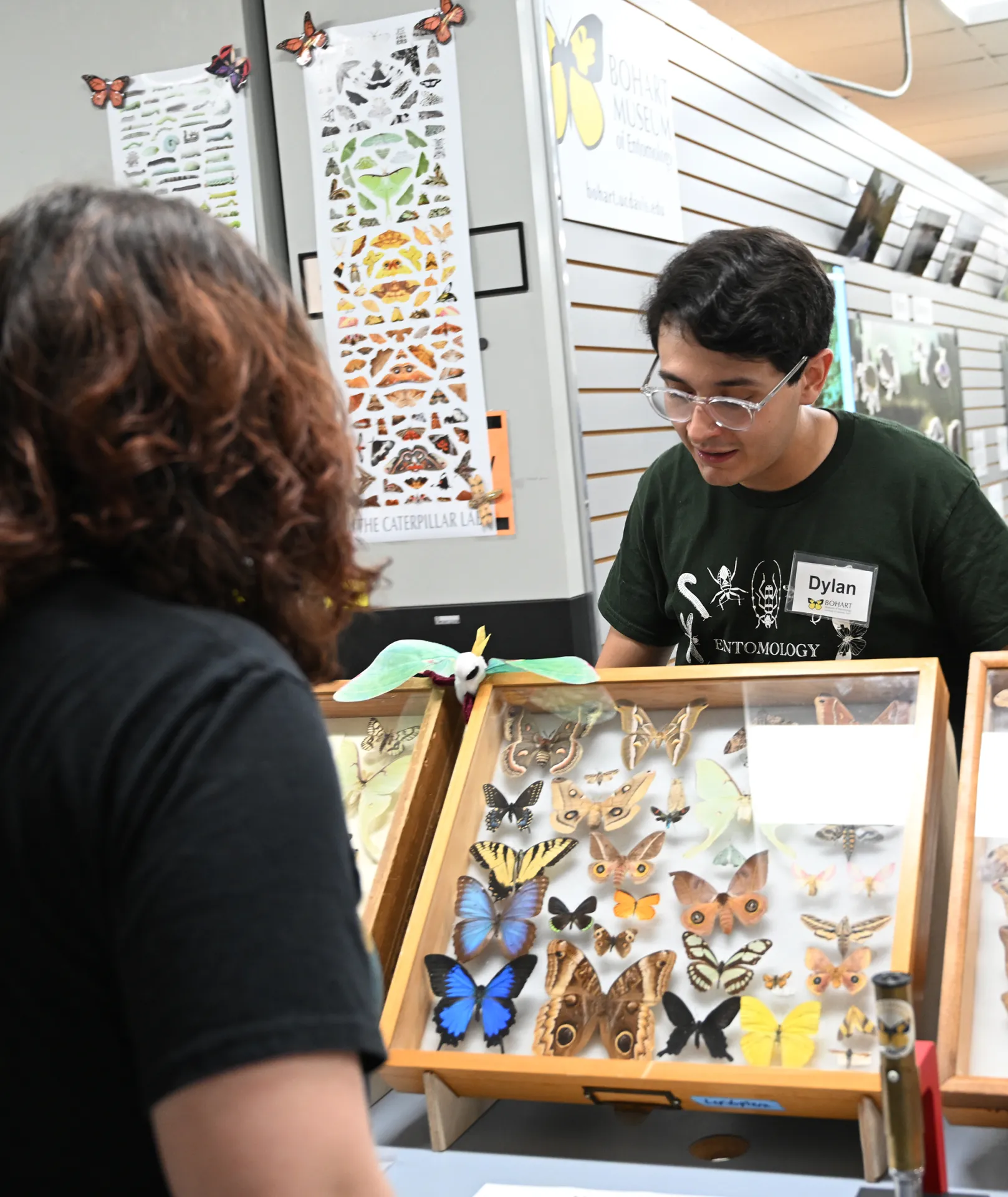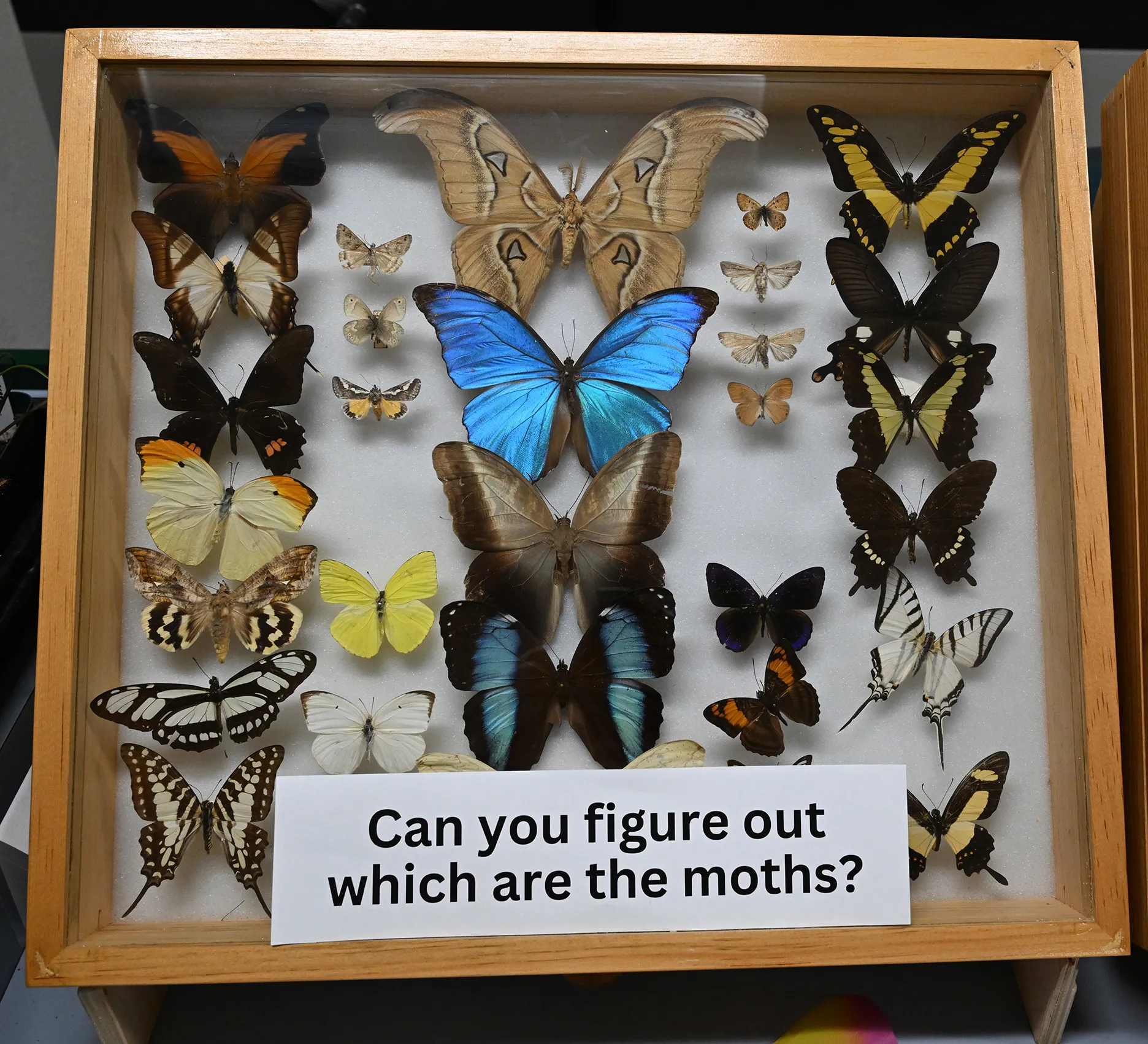
How do moths differ from butterflies?
Scientists at the Bohart Museum of Entomology at UC Davis answered questions and displayed both moths and butterflies at their recent Moth Night, in observation of National Moth Week, July 19-27. Bohart associates Jeff Smith, curator of the Lepidoptera collection and John "Moth Man" De Benedictus fielded questions, as did UC Davis third-year entomology major Dylan Vega.
Vega showed visitors several specimen displays of moths and butterflies that questioned: "Can you figure out which ones are the moths?"
Another display, "Moth vs. Butterfly," acknowledged that moths and butterflies can sometimes be difficult to distinguish.
A good way to determine moth vs, butterfly is the antennae, scientists say. Most butterflies have thin slender antennae (feelers) which are club-shaped at the end. Moths often have comb-like or feathery antennae, unclubbed. However, a few moths (the family Castniidae) have clubbed antennae. Some butterflies, like Pseudopontia paradoxa from the forests of central Africa, lack the clubbed ends. The Hesperiids often have an angle to the tip of the antenna.
It's not always true that moths are brown and drab and butterflies are colorful. There are many brown butterflies and colorful moths in the world.
Most moths are nocturnal (active at night). Butterflies are diurnal (active during the day). However, there are day-flying moths, including the diurnal spongy moth and the "Uraniidae" or Sunset moths.
Another point mentioned: When moths rest, they tend to hold their wings spread across their backs. Butterflies frequently tend to hold their wings up. However, there are exceptions. Some butterflies, like the skippers, may perch with their wings either flat or folded or in-between (the aptly named "jet plane" position).
Glorbally, there are more than 160,000 species of moths, "with more to discover," the Bohart display noted. "There are more than 17,500 species of butterflies with more to discover."
The Bohart Museum, located in Room 1124 of the Academic Surge Building, 455 Crocker Lane, houses a global collection of eight million insect specimens, plus a live petting zoo and an insect-themed gift shop. The director is Professor Jason Bond, the Evett and Marion Schlinger Endowed Chair of Insect Systematics, UC Davis Department of Entomology and Nematology, and the executive associate dean of the College of Agricultural and Environmental Sciences.
For more information, access the website at https://bohart.ucdavis.edu/ or email bmuseum@ucdavis.edu.


